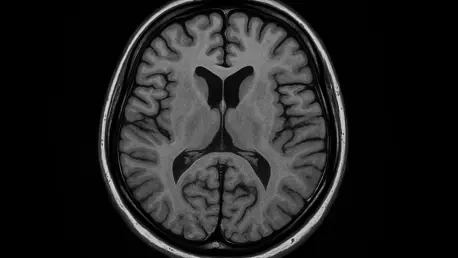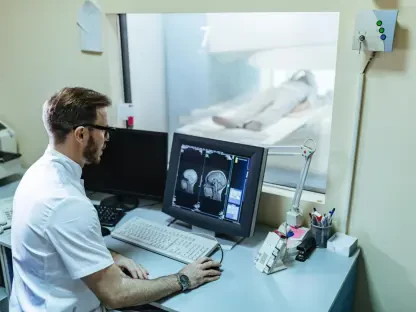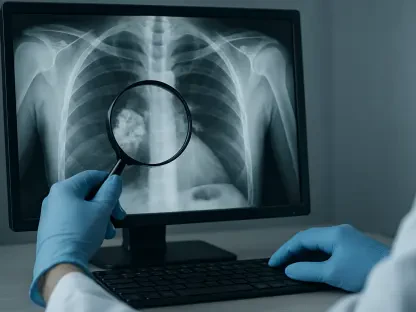In a tragic accident that has left the medical community and public deeply reflective, a 61-year-old man from Long Island, New York, tragically lost his life after being caught in an MRI machine due to the magnetic pull on a metal necklace. This heart-wrenching incident underscores a harsh reality about the significant risks inherent in the sophisticated technology widely used in medical diagnostics. Although MRI machines are invaluable in providing detailed images of the human body’s internal structures through magnetic fields and radio waves, they possess a dangerous potential if safety protocols are overlooked. This fatal occurrence reiterates the critical need for stringent adherence to safety guidelines. It serves as a sobering reminder of how an oversight, such as wearing metallic jewelry, can have devastating consequences, even though MRI procedures are generally safe and painless when conducted with established precautions.
The Harsh Realities of MRI Procedures
Magnetic Resonance Imaging (MRI) machines are among the most crucial advances in medical technology, offering exceptional diagnostic capabilities by using powerful magnetic fields. However, these machines are not without their dangers. The powerful magnetic forces can attract metals with force capable of causing grave injuries or death. This tragic incident in Long Island is a stark example of the critical importance of safety protocols revolving around these high-tech machines. The situation has prompted an investigation by local authorities to ascertain how a metal object was allowed to enter the MRI room during an active scan. While safety protocols are in place to prevent such occurrences, this accident has highlighted potential lapses in routine checks that ensure metallic objects are removed before a scan. With protocols in place, the risk of such accidents can be mitigated, ensuring MRI technology continues to be a safe diagnostic tool.
Dr. Payal Sud of North Shore University Hospital commented on the shocking event by emphasizing the general safety of MRI procedures when the established guidelines are followed. She noted that the risks of harm predominantly arise from the presence of metallic items in the scan room. Her insights underscore a pivotal aspect of MRI safety: vigilance in removing any metal objects before entering the MRI room. Organizations such as the NHS have issued detailed guidelines on MRI safety, reinforcing this point. Removing metallic items is not merely a recommendation but a crucial step in preventing fatal accidents. This vigilance includes ensuring patient screening forms are thoroughly completed and reviewed, and effective communication is maintained between medical staff and patients regarding the risks involved.
The Need for Enhanced Safety Protocols
The devastating occurrence has catalyzed serious discussions within the medical community regarding the efficacy of existing safety protocols and their enforcement. There is a pressing need to reassess and potentially enhance safety measures to prevent similar tragedies in the future. This calls for not only strict adherence to established procedures but also for continuous training and education of medical personnel involved in the operation of MRI machines. Comprehensive training programs can ensure that those responsible for the machines are fully aware of the dangers and are vigilant in enforcing safety measures. Improved communication strategies are also being advocated to guarantee that patients understand the pre-scan requirements and risks clearly.
Furthermore, technological advancements are being explored to provide additional layers of safety. For instance, developments in metal detection technologies for MRI environments are being considered as complementary safety measures. These innovations could potentially alert staff to prohibited metal objects in proximity to the machines, adding an automatic safety net to human diligence. Future pathways could also include improved patient education materials and more rigorous pre-scan interviews to identify potential risks.
Moving Forward with Greater Caution
Magnetic Resonance Imaging (MRI) machines represent a significant breakthrough in medical diagnostics, utilizing potent magnetic fields for exceptional results. Nevertheless, they come with inherent risks. The powerful magnetism can draw metal objects with a force that poses serious danger, as tragically illustrated by an incident on Long Island. This event underscores the essential nature of stringent safety protocols associated with MRI use. In response, local authorities are investigating how a metal object entered the MRI room during a scan session. Despite existing precautions aimed at preventing such events, this incident has spotlighted potential inefficiencies in routine safety checks, such as ensuring no metallic items are present. When protocols are rigorously followed, the risk of accidents diminishes, maintaining MRI’s role as a safe diagnostic tool. Dr. Payal Sud of North Shore University Hospital highlighted the typical safety of MRIs when guidelines are adhered to, stressing the primary danger of metals in scan areas. Institutions like the NHS emphasize removing metal objects as a crucial safety measure, which involves thorough patient screening and clear staff communication.









